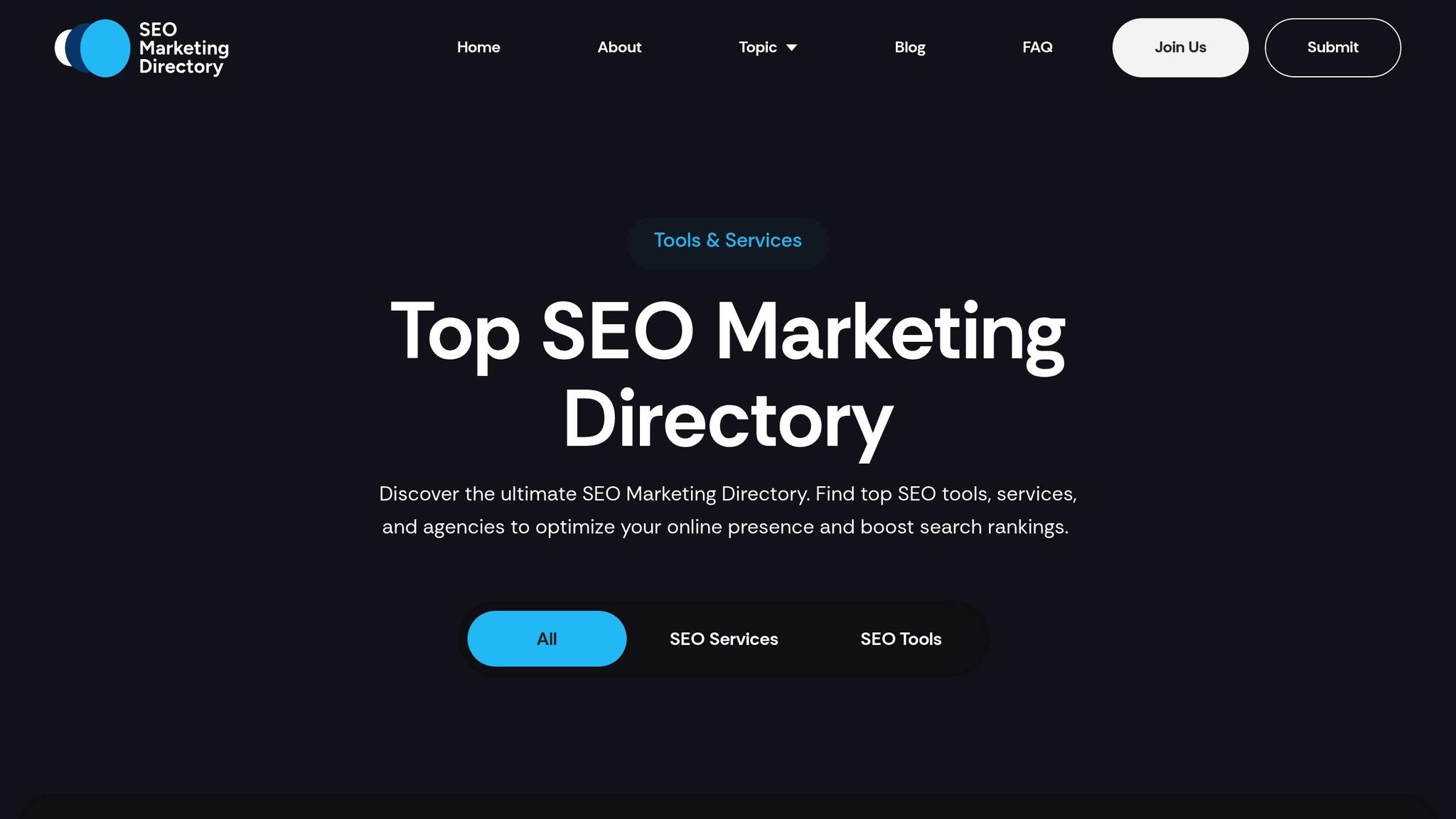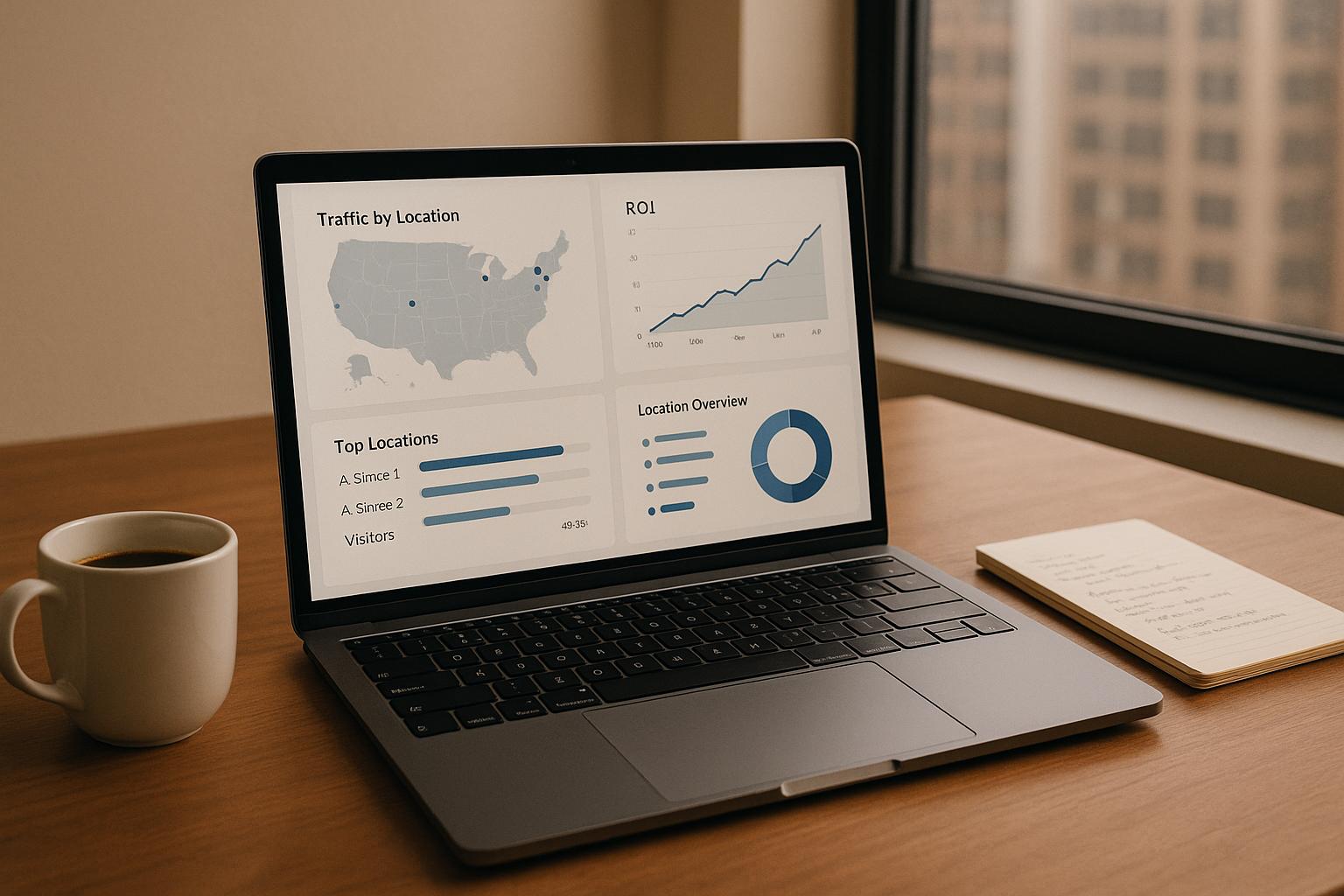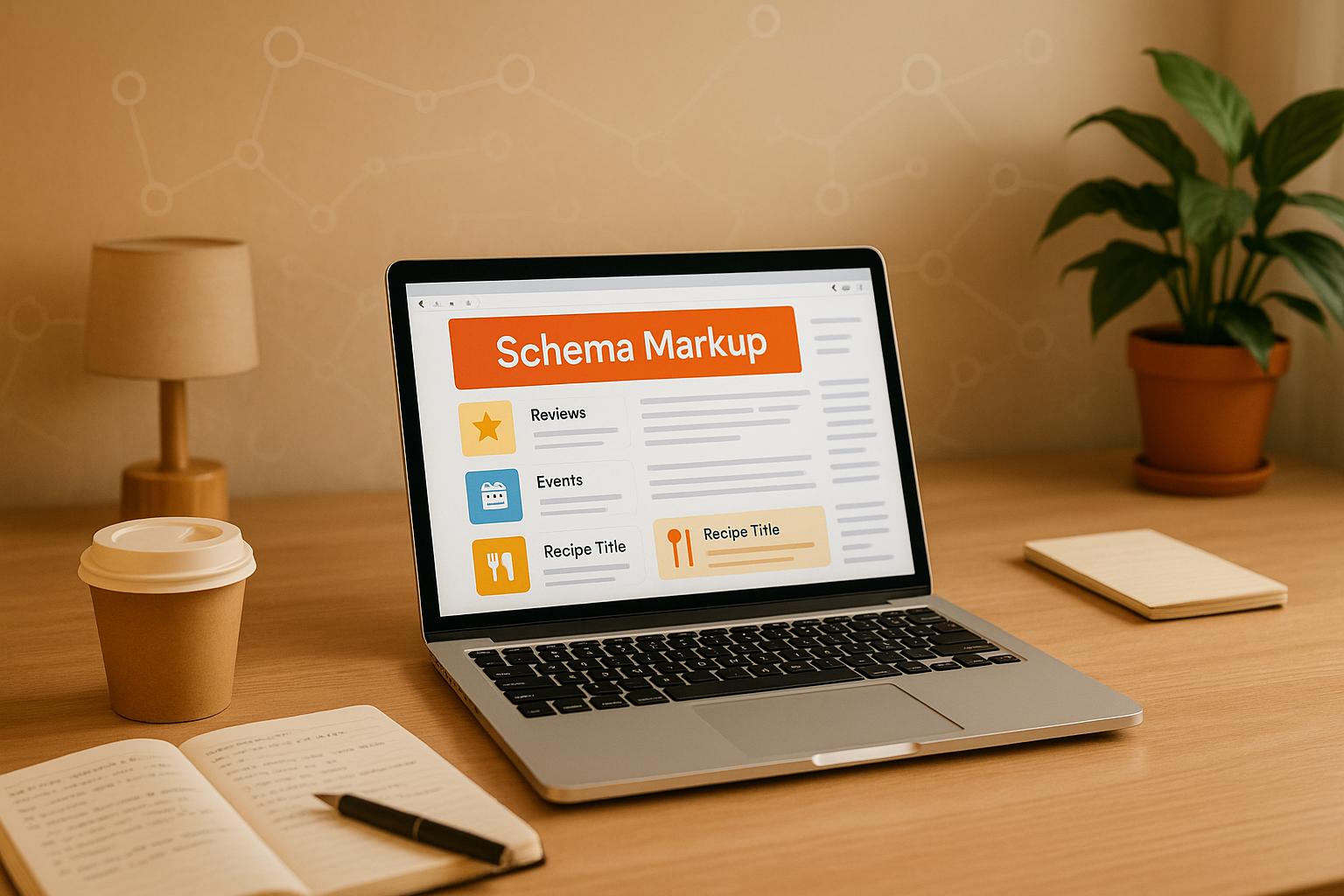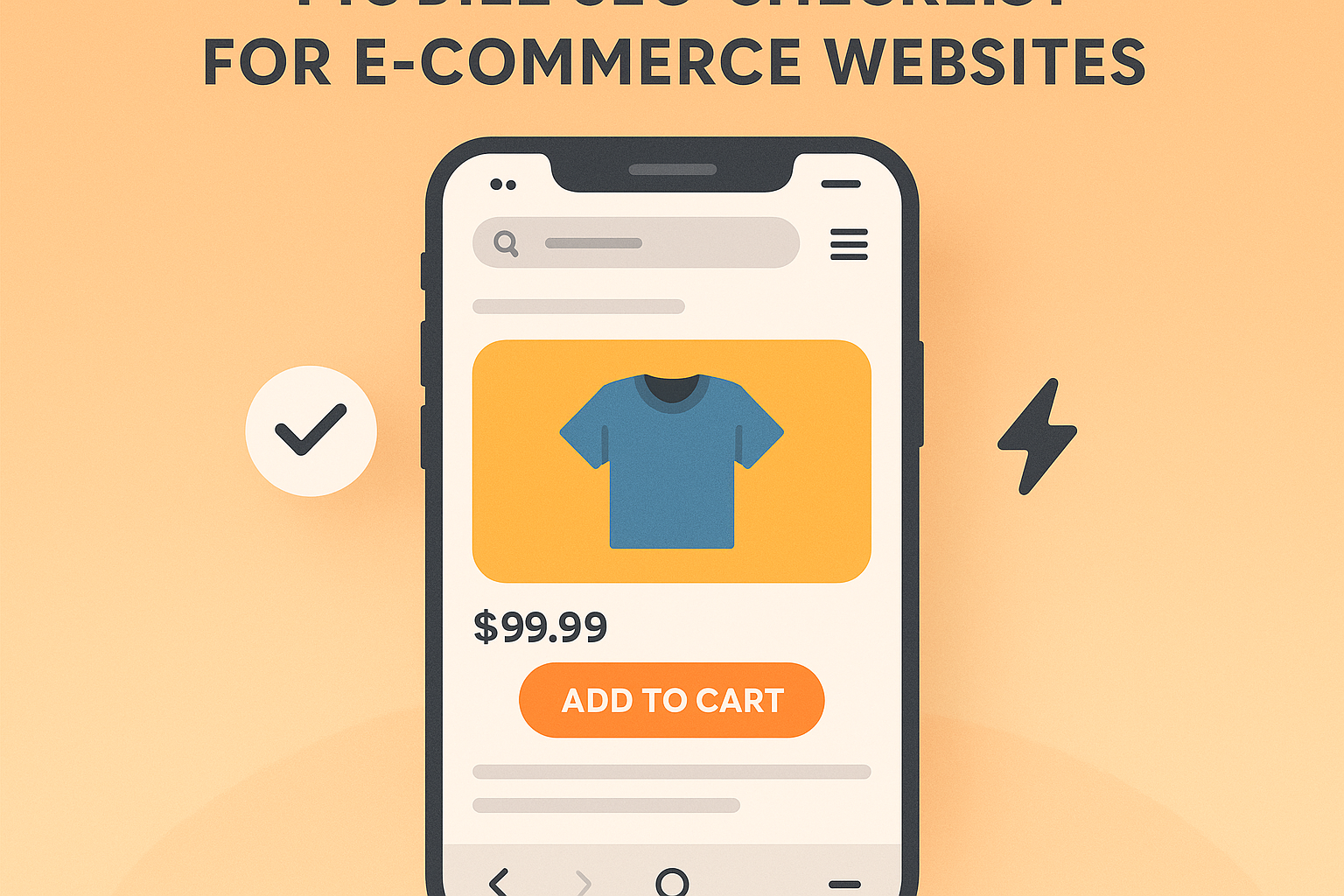CSS media queries are essential for creating responsive websites that work seamlessly across different screen sizes and devices. They allow developers to apply specific styles based on conditions like screen width, orientation, and resolution. This ensures websites look great and function well on smartphones, tablets, and desktops - all from a single codebase.
Here’s why they matter and how to use them effectively:
- Why It Matters: Mobile traffic dominates the web, and search engines like Google prioritize mobile-friendly sites in rankings. Poor mobile design can lead to higher bounce rates and lost revenue.
- How They Work: Media queries use the
@mediarule to apply styles when certain conditions are met. For example, you can adjust layouts for screens larger than 768px or switch to compact menus for smaller devices. - Key Features:
- Target screen sizes with breakpoints like 576px (phones), 768px (tablets), and 992px (desktops).
- Combine conditions using logical operators like
andornot. - Use modern range syntax for cleaner, more intuitive code.
Media Query Syntax and Basic Concepts
Basic Syntax of Media Queries
Media queries are a cornerstone of responsive web design. They start with the @media at-rule, followed by an optional media type and one or more media feature expressions. Here's the general format:
@media <media-type> and (media feature) { /* CSS-Code */ }
Both the media type and the features are optional. If you don't specify a media type, it defaults to all. Media feature expressions, like (min-width: 600px), must be wrapped in parentheses. For instance, (min-width: 600px) applies styles when the screen width is 600 pixels or wider.
A typical mobile-first query might look like this:
@media (min-width: 768px) {
.container {
max-width: 1200px;
margin: 0 auto;
}
}
This example ensures the container's styles are applied only when the screen width is 768 pixels or larger, keeping smaller device styles intact.
Now, let's delve into how logical operators can refine these queries.
Using Logical Operators in Media Queries
Logical operators give you more control by allowing multiple conditions to be combined or modified within a media query. Here’s a breakdown of how they work:
-
andOperator: Combines multiple conditions. For example:
This applies styles only when both conditions - screen width between 768 and 1024 pixels - are met.@media (min-width: 768px) and (max-width: 1024px) { ... } -
orOperator (Comma): Separates queries, applying styles if any condition is true:
Here, the@media (max-width: 767px), (orientation: portrait) { .mobile-menu { display: block; } }.mobile-menustyles are applied if the screen width is 767 pixels or less, or if the device is in portrait orientation. -
notOperator: Negates a condition, applying styles only to devices that don't meet the criteria:
This targets all devices except screens that are 1200 pixels wide or larger.@media not screen and (min-width: 1200px) { ... } -
onlyOperator: Limits styles to a specific media type. While rarely used today, it ensures older browsers ignore the query if they don't recognize the media type.
Logical operators are particularly useful for fine-tuning styles to fit specific device ranges, orientations, or combinations of conditions. They allow you to create highly targeted, responsive designs.
Learn CSS Media Queries by Building 3 Projects - Full Course
Mobile Media Query Breakpoints
Breakpoints are a cornerstone of responsive design - they determine when your layout adjusts to fit different screen sizes. Instead of focusing on specific devices, the modern approach is to base breakpoints on content needs. This ensures your design adapts naturally across a variety of screen sizes.
Standard Breakpoints for Mobile Devices
Here are common breakpoints that suit most projects:
- Extra Small Devices (Portrait Phones): Up to 575px
- Small Devices (Landscape Phones): 576px and up
- Medium Devices (Tablets): 768px and up
- Large Devices (Desktops): 992px and up
- Extra Large Devices (Large Desktops): 1200px and up
These breakpoints are widely used in CSS frameworks and cover the majority of devices in the United States. The 768px breakpoint is particularly important as it marks the transition from mobile to tablet views.
Here’s an example of how you can integrate these breakpoints in your CSS:
/* Base styles for mobile-first design */
.container {
padding: 15px;
font-size: 14px;
}
/* Small devices (landscape phones, 576px and up) */
@media (min-width: 576px) {
.container {
padding: 20px;
}
}
/* Medium devices (tablets, 768px and up) */
@media (min-width: 768px) {
.container {
max-width: 750px;
margin: 0 auto;
font-size: 16px;
}
}
/* Large devices (desktops, 992px and up) */
@media (min-width: 992px) {
.container {
max-width: 970px;
}
}
A 320px minimum width is often used as the baseline for mobile design, ensuring compatibility with even the smallest smartphones still in use.
Customizing Breakpoints for Your Audience
Standard breakpoints are a great starting point, but tailoring them to your audience can improve responsiveness. Tools like Google Analytics can help you identify the most common screen resolutions among your users.
For example, news websites might add a breakpoint around 480px to improve readability on larger phones, while e-commerce sites often adjust breakpoints to optimize product images and shopping cart functionality. The key is to set breakpoints where your content naturally shifts, rather than sticking to fixed device sizes.
When deciding on breakpoints, keep performance in mind. Adding too many breakpoints can make your CSS overly complex. Focus on three to five critical breakpoints that address the most significant user needs. And don’t rely solely on desktop tools - real-device testing is essential to catch issues like touch interactions and scrolling behavior that might not show up in browser developer tools.
Measurement Units in Media Queries
The units you choose for media queries can affect how your design responds to different browsing conditions. Here’s a breakdown of the most common options:
-
Pixels (px): The most widely used unit, offering precise control and consistency across devices.
@media (min-width: 768px) { /* Applies when viewport is 768px or wider */ } -
Em units: Based on the browser’s default font size (typically 16px). These are ideal for designs that need to adapt to user font-size preferences.
@media (min-width: 48em) { /* Equivalent to 768px if default font size is 16px */ } -
Rem units: Similar to ems but calculated from the root font size. These are great for accessibility-focused designs where users might adjust browser font sizes for readability.
@media (min-width: 48rem) { /* Scales proportionally with root font size */ }
Using em or rem units allows your design to adapt when users increase their browser’s font size, ensuring better accessibility. On the other hand, px units provide the most predictability, making them ideal for layouts with strict requirements.
Most responsive frameworks stick with pixels for simplicity, but your choice should depend on your project’s accessibility goals and audience preferences.
sbb-itb-5be333f
Advanced Media Query Techniques for Mobile
Once you've got the basics of media queries under your belt, it's time to explore advanced techniques. One standout tool is the range syntax, which simplifies your code and makes it easier to read.
Using Range Syntax for Simpler Queries
The range syntax in CSS media queries replaces the older min- and max- keywords with standard comparison operators like <, <=, >, >=, and =. This makes your queries more intuitive and concise.
Here's how media queries used to look:
/* Traditional method */
@media (min-width: 400px) and (max-width: 600px) {
.mobile-card {
padding: 20px;
margin: 10px;
}
}
With range syntax, you can achieve the same result in a cleaner way:
/* Modern range syntax */
@media (400px <= width <= 600px) {
.mobile-card {
padding: 20px;
margin: 10px;
}
}
This new approach makes defining value ranges much simpler. It also allows for single-sided comparisons, giving you even more flexibility:
/* Target screens narrower than 480px */
@media (width < 480px) {
.compact-layout {
font-size: 14px;
}
}
/* Target screens 768px and wider */
@media (width >= 768px) {
.expanded-layout {
display: grid;
grid-template-columns: 1fr 2fr;
}
}
The beauty of this syntax is that it works with any numeric media feature, such as height, aspect-ratio, and resolution. This makes it a powerful tool for crafting responsive designs that look great across all kinds of mobile devices.
Using Top SEO Marketing Directory for Mobile Optimization Resources

If you're looking to fine-tune mobile CSS and elevate your site's performance, the Top SEO Marketing Directory is an excellent resource. It connects you with tools and agencies that specialize in mobile optimization and responsive design analysis, making it easier to address technical SEO challenges.
Finding Technical SEO Resources
The directory focuses on technical SEO solutions tailored to support mobile optimization. In its mobile SEO category, you'll discover tools designed to evaluate how breakpoints perform across different devices. These resources can help you run detailed SEO audits, ensuring your site meets mobile usability standards, optimizes page speed for various screen sizes, and implements technical improvements effectively.
Beyond technical audits, the directory also features tools that enhance mobile-responsive designs. These tools ensure your designs not only look great but also rank well in search engines.
Benefits for Businesses and Developers
The directory offers benefits that cater to both businesses and developers, providing solutions for different budgets and needs. Here's a breakdown of its access plans:
- Basic Plan: Free access to essential directory listings, perfect for comparing SEO tools and services at no cost.
- Premium Plan: For $49/month, you gain access to advanced tools and detailed agency listings, ideal for those needing more robust support.
- Enterprise Solutions: Custom pricing for large organizations with specific requirements.
Each listing in the directory is carefully curated, offering detailed insights into the provider's expertise. Whether it's technical SEO, mobile optimization, or performance analytics, this saves you time by connecting you with specialists who understand the complexities of mobile CSS.
The directory also emphasizes analytics and optimization. Many providers featured in the listings offer expert advice on measuring the effectiveness of media queries, tracking mobile user behavior, and improving Core Web Vitals - key metrics for mobile performance.
For businesses prioritizing mobile-first design strategies, the directory is a gateway to agencies specializing in programmatic SEO and e-commerce SEO. These experts understand how CSS media queries influence search engine rankings and can help align your responsive design with broader digital marketing goals.
Conclusion
Mobile CSS media queries are the backbone of modern mobile-first web design. They ensure websites look and function well across various devices - whether it’s a compact smartphone, a tablet, or a desktop computer. When implemented thoughtfully, they can transform a frustrating browsing experience into one that's smooth and engaging.
Key Points
To use mobile media queries effectively, it's crucial to understand the basics. Features like max-width, min-width, and orientation allow developers to target specific device characteristics. While many rely on standard breakpoints, tailoring these based on your audience's actual device usage often delivers better results.
For those looking to fine-tune their responsive designs, advanced techniques such as range syntax and feature detection can be game-changers. These approaches not only keep your code cleaner but also help you adapt to device capabilities beyond just screen size.
The Top SEO Marketing Directory is an excellent resource to explore. It offers access to technical SEO tools and agencies that specialize in mobile optimization. From performance analysis and responsive design evaluations to Core Web Vitals insights, this directory connects you with solutions to improve mobile performance.
Next Steps for Implementation
To put these ideas into action, start by auditing your site's mobile performance using browser developer tools. Identify areas where media queries can enhance usability. Begin with widely-used mobile breakpoints, then gradually incorporate more advanced queries as needed.
Testing on real devices is a must. While simulations are helpful, physical testing on a variety of phones and tablets often uncovers hidden issues.
Finally, consider leveraging tools and expert advice from the Top SEO Marketing Directory. Their insights can help you address technical SEO challenges, resolve performance issues, and uncover new ranking opportunities.
FAQs
What’s the best way to choose breakpoints for my website’s mobile-friendly design?
To determine the most effective breakpoints for your website, begin by examining your audience's device preferences and screen sizes. While common breakpoints like 360px for mobile, 768px for tablets, and 1366px for desktops work well for many sites, a more personalized approach can make a big difference. Dive into your website analytics to pinpoint the screen widths your visitors use most often. This way, you can fine-tune your design to match their habits and deliver a user experience that feels tailored to them.
What are the benefits of using range syntax in CSS media queries?
Using range syntax in CSS media queries offers several advantages for developers. It streamlines code by enabling cleaner and more readable expressions, which makes defining specific viewport ranges much simpler. This is particularly useful when dealing with responsive designs that rely on precise breakpoints.
Another perk is the support for mathematical comparison operators like >= and <=. These operators make the code clearer and eliminate the need for overly verbose or repetitive statements. As a result, media rules become easier to manage and tweak as needed, improving both clarity and long-term maintainability.
How do media queries affect SEO, and how can they help optimize mobile performance?
Media queries are essential for SEO because they enable responsive web design. This ensures your website looks great and works smoothly on any device, from smartphones to desktops. A responsive design not only enhances the user experience but also helps lower bounce rates. Plus, it aligns perfectly with Google's mobile-first indexing approach, which can give your search rankings a boost.
To optimize your site for mobile users, focus on creating flexible layouts, setting the right breakpoints, and testing your design on various devices. If you're looking for guidance, resources like MDN Web Docs and CSS-Tricks provide practical tips and examples to help you implement media queries effectively. This way, your site can adjust effortlessly to different screen sizes and resolutions.


